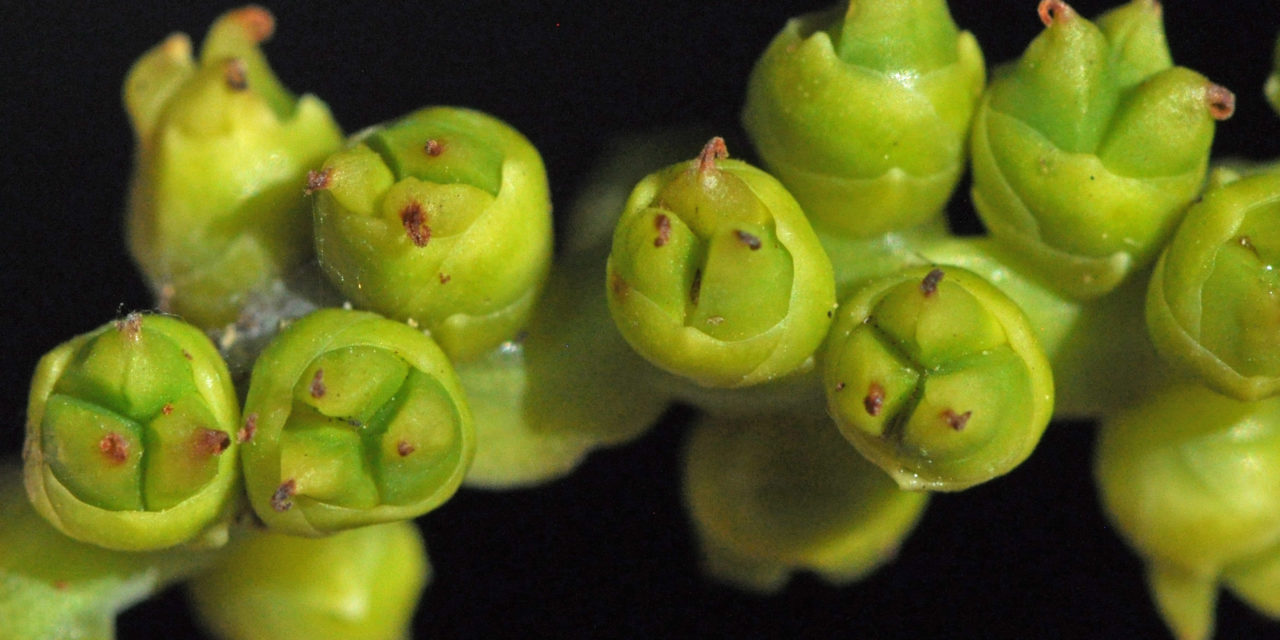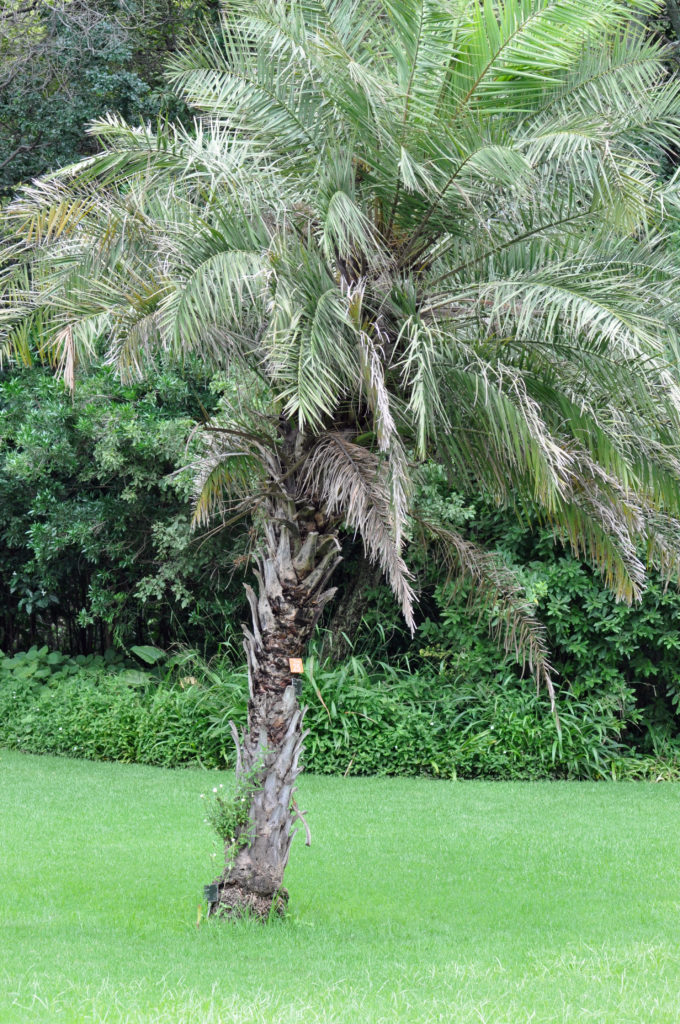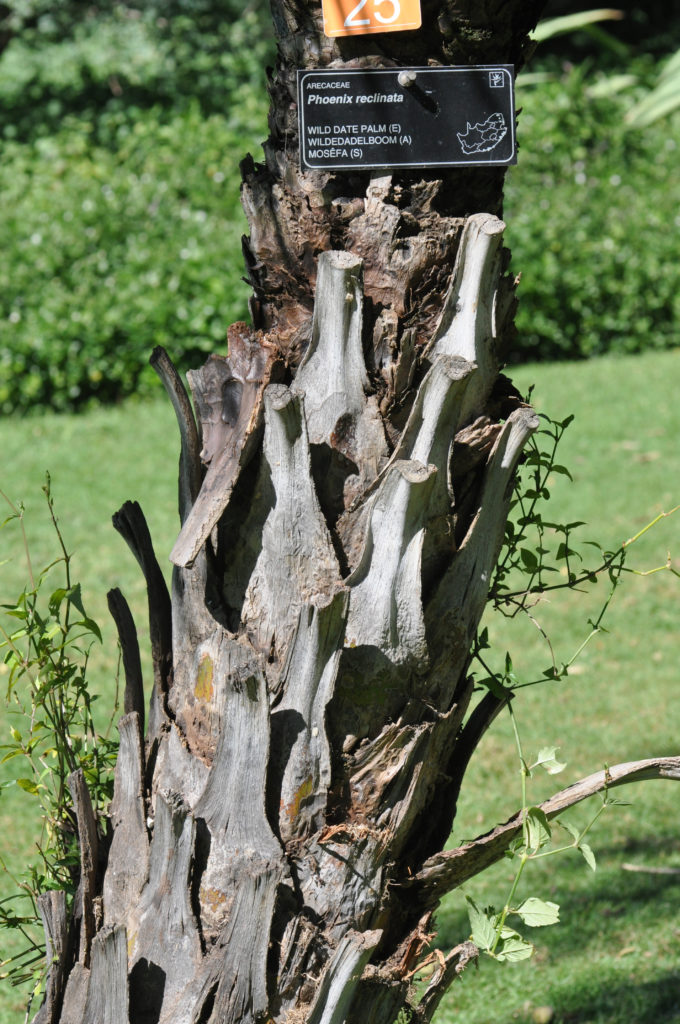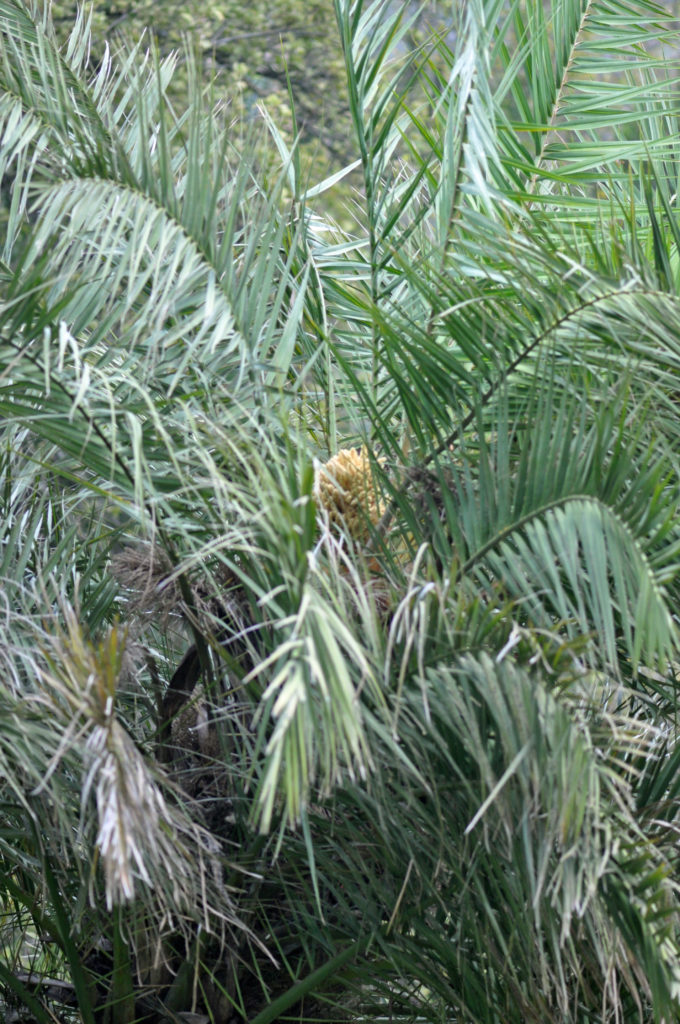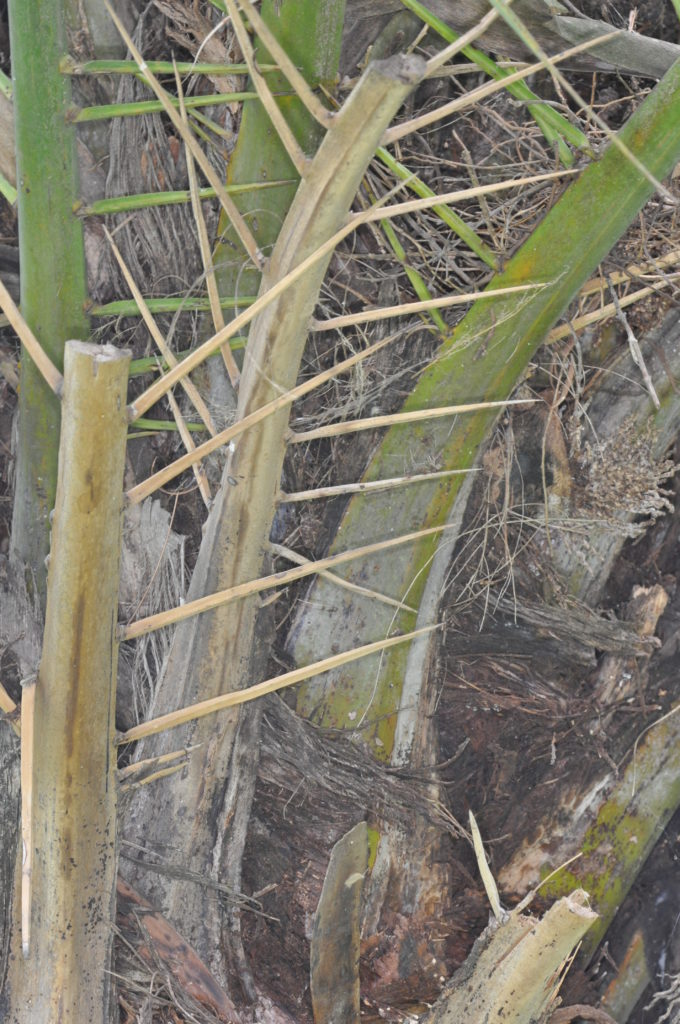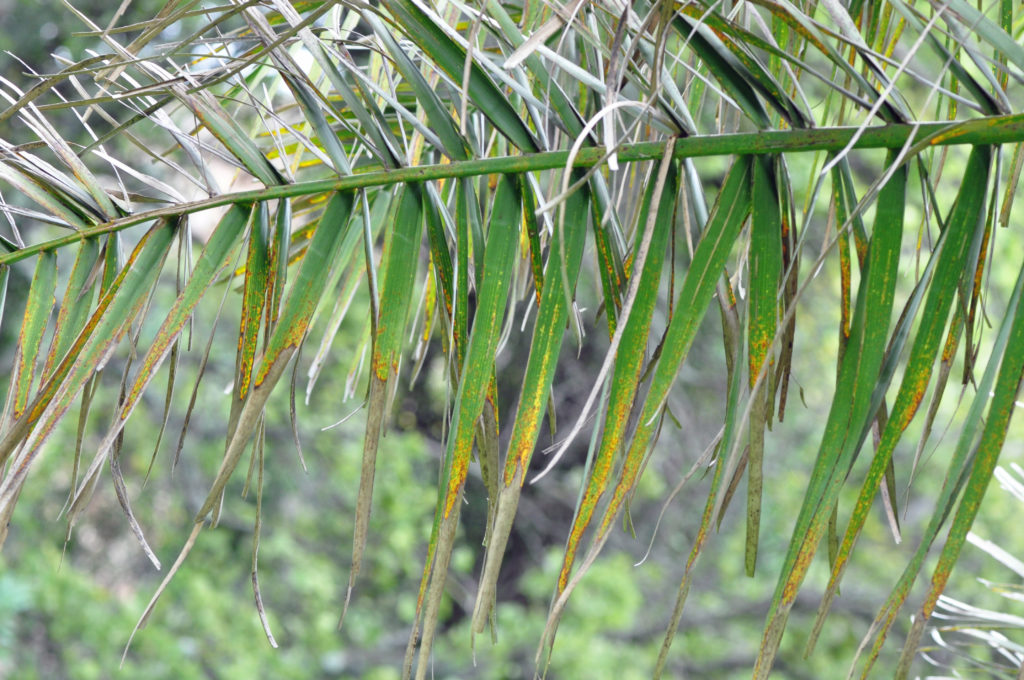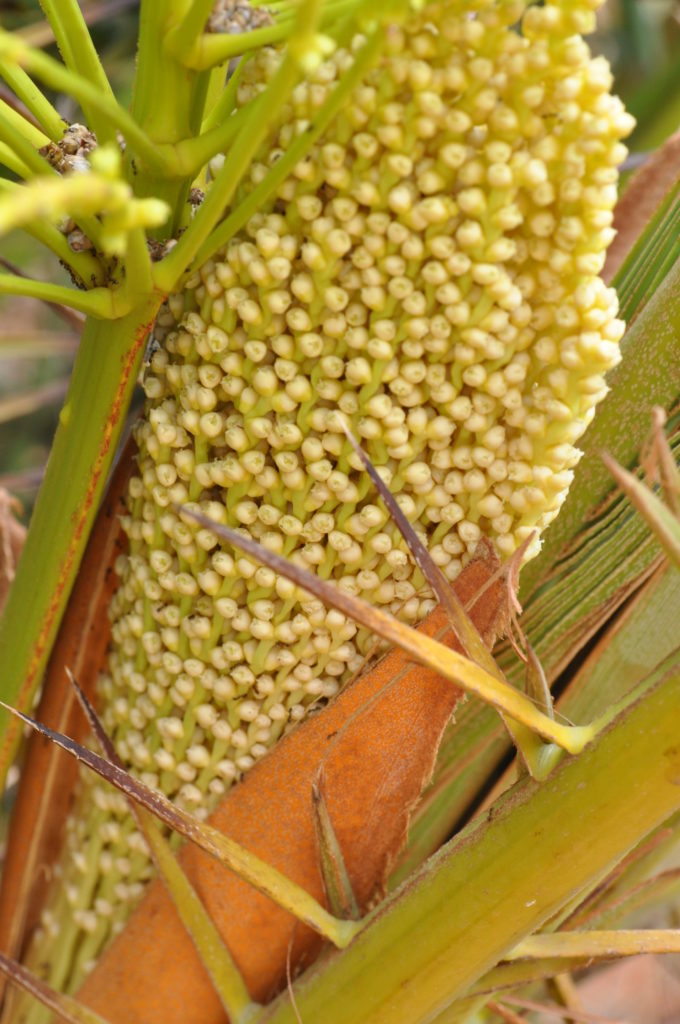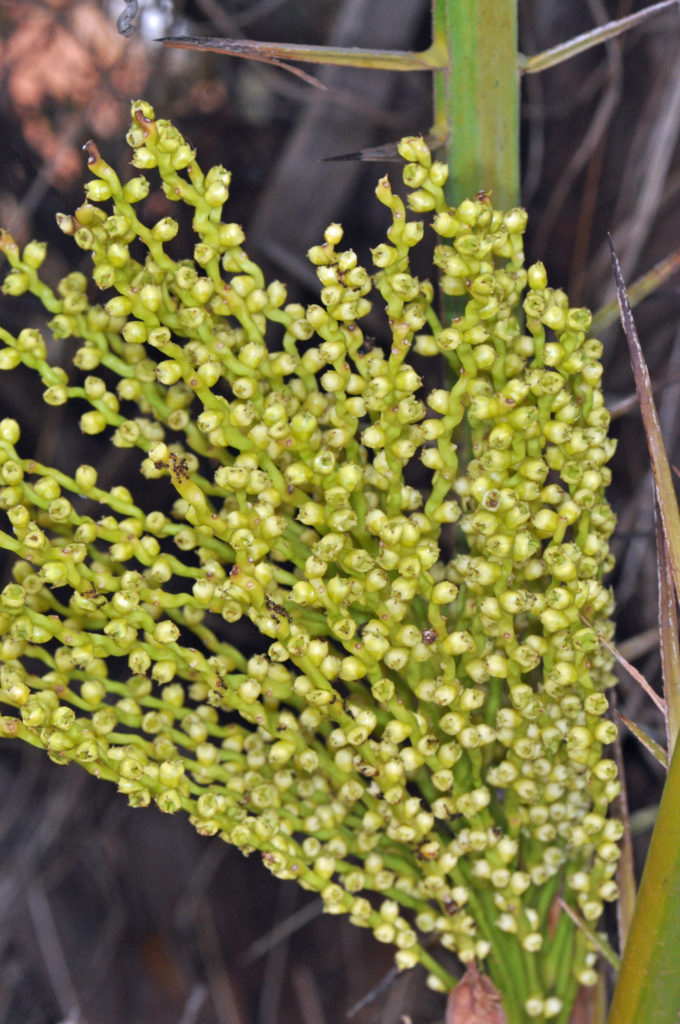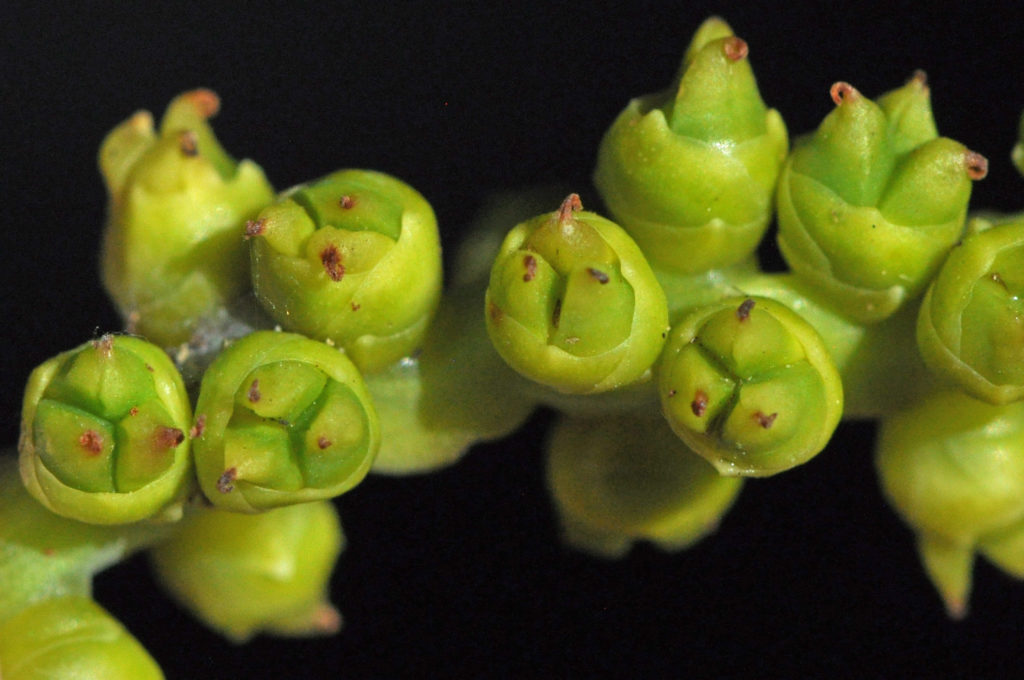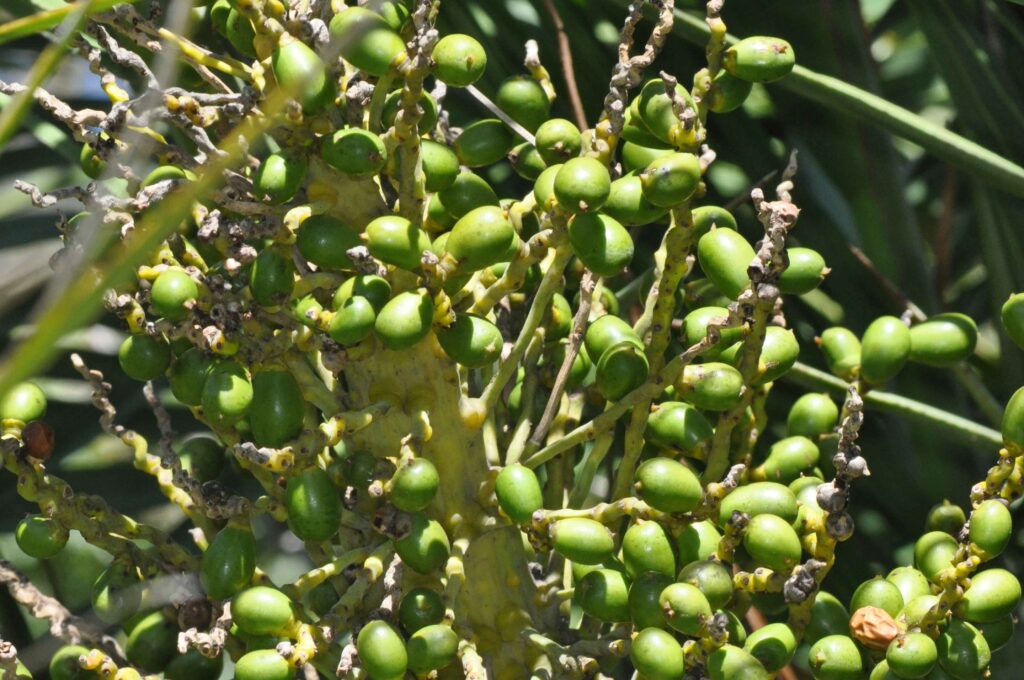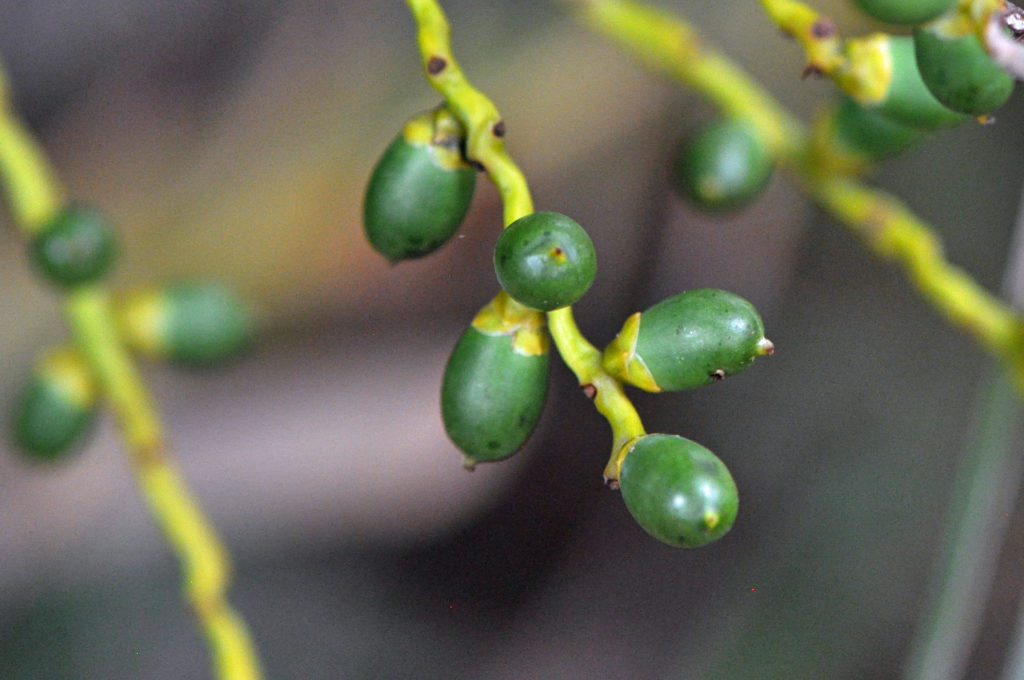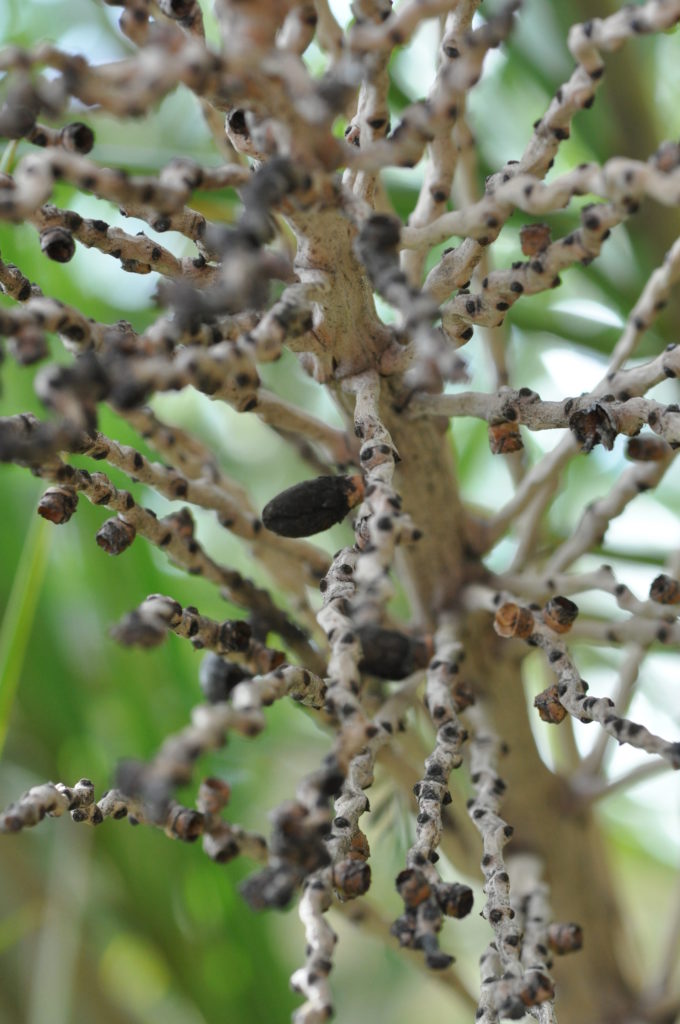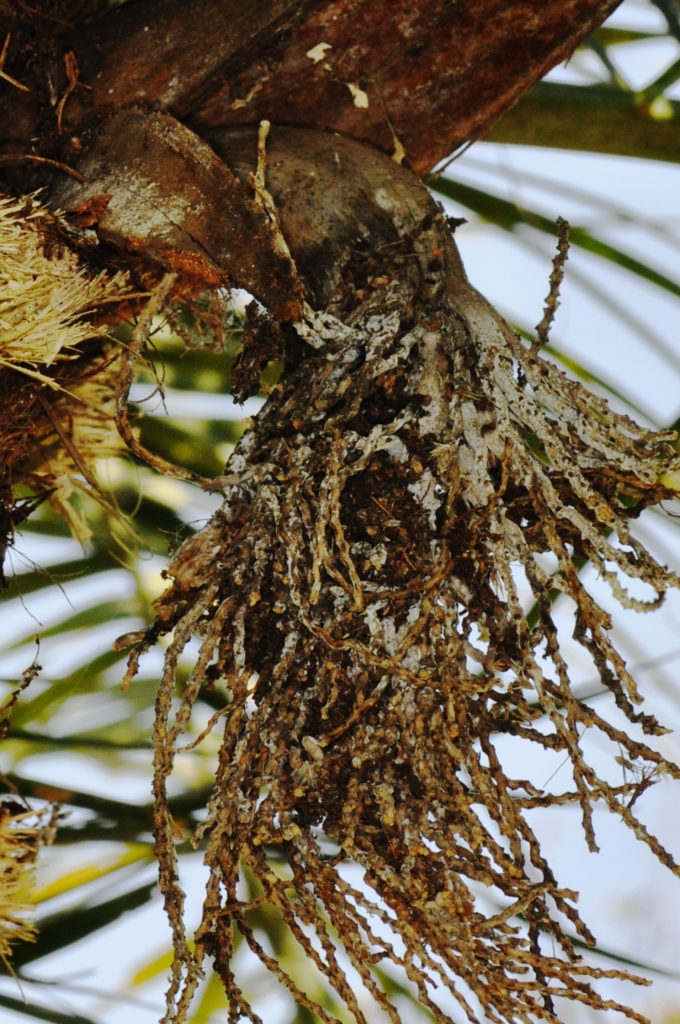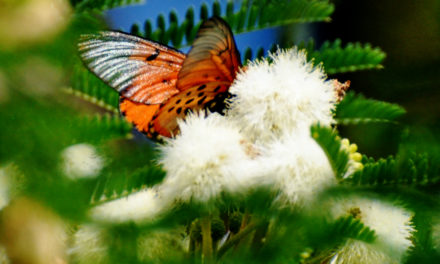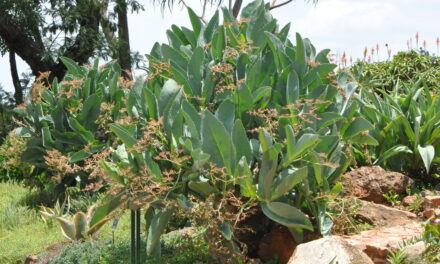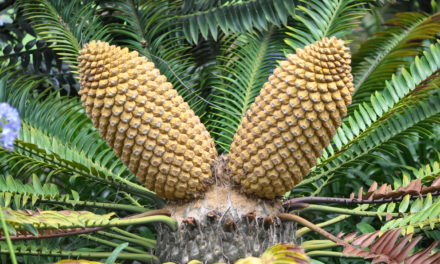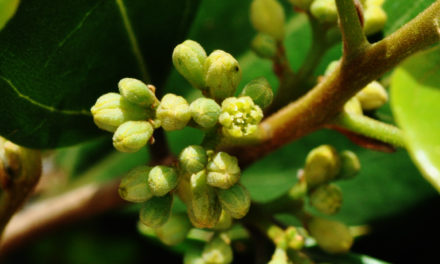General Info – summary
This dioecious, evergreen Tree is usually up to 6m high and may be multi-stemmed. Pinnate Leaves are up to 4m long. Leaflets are reduced to spines near base –petiole has none. Lower, older leaves die on the trunk. Small, creamy, spaced apart Flowers are in panicles. Males have 6 stamens and females have an inferior ovary, sessile ovules and staminodes. Fruit: oblong berry with one ovoid, ventrally grooved seed.
Description
Phoenix reclinata
SA Tree No. 22.
Common names: (Afr) Palmboom, Rivierpalm, Wilde-dadelboom, Wildedatel, Wilde-koffie. (Eng) Cape Date Palm, Coffee Palm, Feather Palm, Wild Date, Wild Date Palm. (isiXhosa) Idama, Isundu. (isiZulu) Idama, Isundu. (Northern Sotho) Mopalamo. (Setswana) Akindu, Mosêfa, Ncindzu, Tsaro. (siSwati) Lilala, Lisundvu. (Tshivenda) Mutshema, Mutshevho, Mutzhema.
Family: Arecaceae, Palmae (Palm family). There are about 180 genera and in excess of 2 500 species in these monocotyledonous plants. The usually unbranched Trunk is covered with persistent leaf bases or with transverse scars. The tree is evergreen and mature Leaves are pinnately or palmately compound. They occur at the apex of the trunk. The Petiole or rachis is often armed with prickles. The Flowers are in a spadix (a thick fleshy spike inflorescence) surrounded by a spathe (a leaf-like curved bract). They are small and usually unisexual with male flowers in the upper part of the spadix. The 3 sepals and 3 petals are free or fused below. Male flowers usually have 6 stamens. Female flowers may have staminodes present and are usually 3-locular with 1 ovule in each. Fruit is a berry or a drupe with up to 3 seeds. In southern Africa, there are 5 genera and 6 species. Genera on this website include Jubaeopsis, Phoenix, and Raphia.
Name derivation: Phoenix from the Greek word for the commercial date palm. reclinata – bent down / backwards – referring to the arching leaves. reclinata is the only indigenous species of the genus Phoenix in southern Africa
Conservation: National Status: L C (Least concern). Assessment 2017 (L. von Staden).
Tree
This Tree (photo 201) is usually 3-6m high but may reach 10m. The distinct unbranched slender Trunk is either upright or it may lean far over. In this case, the apex tends to point upwards. Suckers may also be present. These plants are often multi stemmed from the base. The trunk is brown to black and up to 30cm wide. Persistent old leaf bases are initially present (photo 81). The current leaves are higher up. The trunk eventually becomes smooth lower down. A dense mass of roots, less than 1cm in diameter may appear on the trunk just above ground level. These aids survival in waterlogged areas.
- 201 2014.02.04 Walter Sisulu NBG. Photo: David Becking.
- 81 2014.04.29 Walter Sisulu NBG. Photo: David Becking.
Leaves
This evergreen tree has Leaves that develop near branch ends and are feather shaped. They are pinnately compound (leaflets arranged along the central rachis – the main axis bearing flowers or leaflets – photo 203). The attractive arching leaves are concentrated forming a single crown, with 2o to 34 leaves. These develop at the apex of the trunk. The overall appearance of the mature tree is palm-like. About one third of the slightly lower leaves are dead or dying. Old leaves are grey and hang down from the crown (photo 998). Each living leaf is between 3 and 4m long, up to 75cm wide and many Leaflets are present on each leaf. The leaflet length is up to 45cm. The parallel veined leaflets are folded along the rachis. Towards the Petiole (leaf stalk) the parallel veined leaflets are reduced to thin, yellowish Spines but the petiole itself is unarmed. Spines are long with a sharp pointed Apex (photo 868) and decrease in size towards the base. Petiolules (stalks of leaflets) are absent.
- 998 2014.04.01 Walter Sisulu NBG. Photo: David Becking.
- 868 2014.03.25 Walter Sisulu NBG. Photo: David Becking.
- 203 2014.02.04 Walter Sisulu NBG. Photo: David Becking.
Flowers
The dense, spiny leaves make the Flowers somewhat difficult to observe. In early summer, these small, cream coloured flowers develop in long sprays (photo 950). Unlike the genus Jubaeopsis, these plants are dioecious (unisexual flowers with male and female on different trees). The flowers are produced in unisexual Panicles (indeterminate, branched inflorescence with stalked flowers). Here they are small, and regularly spaced along the inflorescence – not in groups (photos 950 & 216). The 3-toothed Calyx is cupular (shaped like a small, inverted cup or dome shaped cap and 3 teeth are present – photo 216). In Male flowers, the Corolla has 3 Petals which are valvate (meeting by the edge without overlapping). Here the Ovary is a vestigial (imperfectly developed, non-functional relic that is usually smaller). Clouds of Pollen are produced by the 6 Stamens, which are joined at the base. The Anthers have 2 Thecae (pollen sacs) which open lengthwise. The Female flowers are nearly spherical (photo 216). The Corolla has 3 short, oblong Petals which are truncate (appear to have been cut off at the end). 6 Staminodes (sterile stamens) are present with joined bases forming a membranous cup. There is a single Pistil (a unit of the Gynoecium, the female element of the flower, composed of the Ovary, Style and Stigma). The inferior Ovary has 3 Locules (compartments within an organ e.g., ovary, anther or fruit – photo 216) with a solitary Ovule in each. The Stigmas are sessile (photo 216). (Aug- Dec).
- 954 2016.10.18 Pretoria NBG. Photo: David Becking.
- 950 2016.10.18 Pretoria NBG. Photo: David Becking.
- 216 2018.01.03 Walter Sisulu NBG. Photo: David Becking.
Fruit
The oblong, yellowish fleshy Fruit is a Berry (pulpy, indehiscent fruit like a grape or tomato), which occurs in large, hanging bunches (photo 83). It develops from a single carpel and is ovoid to oblong and 1-1,5cm long. The fruit is similar but smaller and less fleshy than Phoenix dactylifera (the non-indigenous Date palm). The fruit is initially green (photo 160) and becomes bright yellow or orange to brownish when ripe (photo 583). The fruit has a fleshy Pericarp (fruit wall with has 3 layers – the outermost layer or epicarp, the fleshy middle layer or mesocarp and the inner layer or endocarp which surrounds the seeds – like the woody peach pip) and contains one ovoid, ventrally grooved Seed. (Jan-Aug). With time only the supporting branches remain (photo 402).
- 83. 2014/04/29. Walter Sisulu NBG. Photo: David Becking.
- 160 2017.12.26 Pretoria NBG. Photo: David Becking.
- 583 2016.08.23 Pretoria NBG. Photo: David Becking.
- 402 2015.05.19 Walter Sisulu NBG. Photo: David Becking.
Distribution & Ecology
These relatively low altitude Trees usually grow close to water, near rivers, streams and in or near forests and may be associated with termite mounds. They are also found in seasonally inundated and swamp edges This is a relatively fast growing tree and can resist low temperatures down to – 4°C. It is drought and salt spray tolerant. Trees occur from the Bathurst district in the Eastern Cape – between Nelson Mandela Bay and Buffalo City, Kwa-Zulu-Natal e.g., Mosi Swamps – close to Mozambique and about 80m above sea level, Mpumalanga and Limpopo. Beyond South Africa, they are located in Swaziland and northwards to the Okavango Swamps in North West Botswana, Zimbabwe, northern and eastern Namibia and as far as Egypt and the Arabian Peninsula. They also are found in Madagascar and Comoro islands. The tree has reportedly been naturalized in Florida, Puerto Rico and Bermuda. Fruits attract birds, including mousebirds and many mammals – including monkeys. Baboons and elephants consume the soft Shoots. Elephants consume the fruit, leaves and stems. The butterfly larvae of “Noisy” Palm Tree Night Fighter (Zophopetes dysmephila) feed on leaves of this and other Phoenix species, as well as on Raphia and Crocus species. They are common around the Eastern coast of SA. Bees visit the Flowers.
Ethnobotany
ree Sap is tapped before the tree flowers. This sap and that of the palm Hyphaene coriacea are used to make an alcoholic drink. Roots produce an edible gum. Buds are consumed raw or cooked. The thinly fleshy, sweet-tasting bright orange ripe Fruit is edible but astringent when green. Leaf midribs are used to manufacture baskets and long lasting mats. Leaves are used to make the Xhosa boys initiation kilts. Young Leaf bases are edible. Leaves are used to make ropes. The Rachis (main axis of a leaf) is used in kraal construction. Brushes and brooms are made from fruiting stem fibres, which are first beaten until the fibres part. Dried inflorescences are used to make brooms to sweep areas around dwellings. The edible Fruit is thinly fleshy, sweet when ripe, but astringent (a substance which causes biological tissue to contract) when green. The fruit is smaller but closely related to the date palm (Phoenix dactylifera), which is not indigenous in SA. Local people use spines and leaf petioles medicinally. New growth easily occurs from Seeds, which germinate and transplant readily. Planted trees help to stabilise stream banks.
References
Boon, R. 2010. Pooley’s Trees of eastern South Africa. Flora and Fauna Publications Trust, Durban.
Burrows, J.E., Burrows, S.M., Lotter, M.C. & Schmidt, E. 2018. Trees and Shrubs Mozambique. Publishing Print Matters (Pty) Ltd. Noordhoek, Cape Town.
Coates Palgrave, M. 2002. Keith Coates Palgrave Trees of Southern Africa, edn 3. Struik, Cape Town.
Lawrence, G. H. M, 1951. Taxonomy of Vascular Plants. The Macmillan Company, New York. Tenth Printing 1965.
Palmer, E. & Pitman, N. 1972. Trees of southern Africa. Balkema, Amsterdam, Cape Town.
Schmidt, S. Lotter, M. & McCleland, W. 2002. Trees and Shrubs of Mpumalanga and the Kruger National Park. Jacana, Johannesburg.
van Wyk, B. & van Wyk, P. 1997 Field guide to Trees of Southern Africa. Struik, Cape Town.
von Staden, L. 2017. Phoenix reclinata Jacq. National Assessment: Red List of South African Plants version 2020.1. Accessed on 2022/04/06.
http://www.southcoastgrowersflorida.com/reclinata.html
http://edis.ifas.ufl.edu/st440
http://worldagroforestry.org/treedb2/AFTPDFS/Phoenix_reclinata.PDF
http://posa.sanbi.org/flora/browse.php?src=SP
http://hort.ufl.edu/trees/PHORECA.pdf

